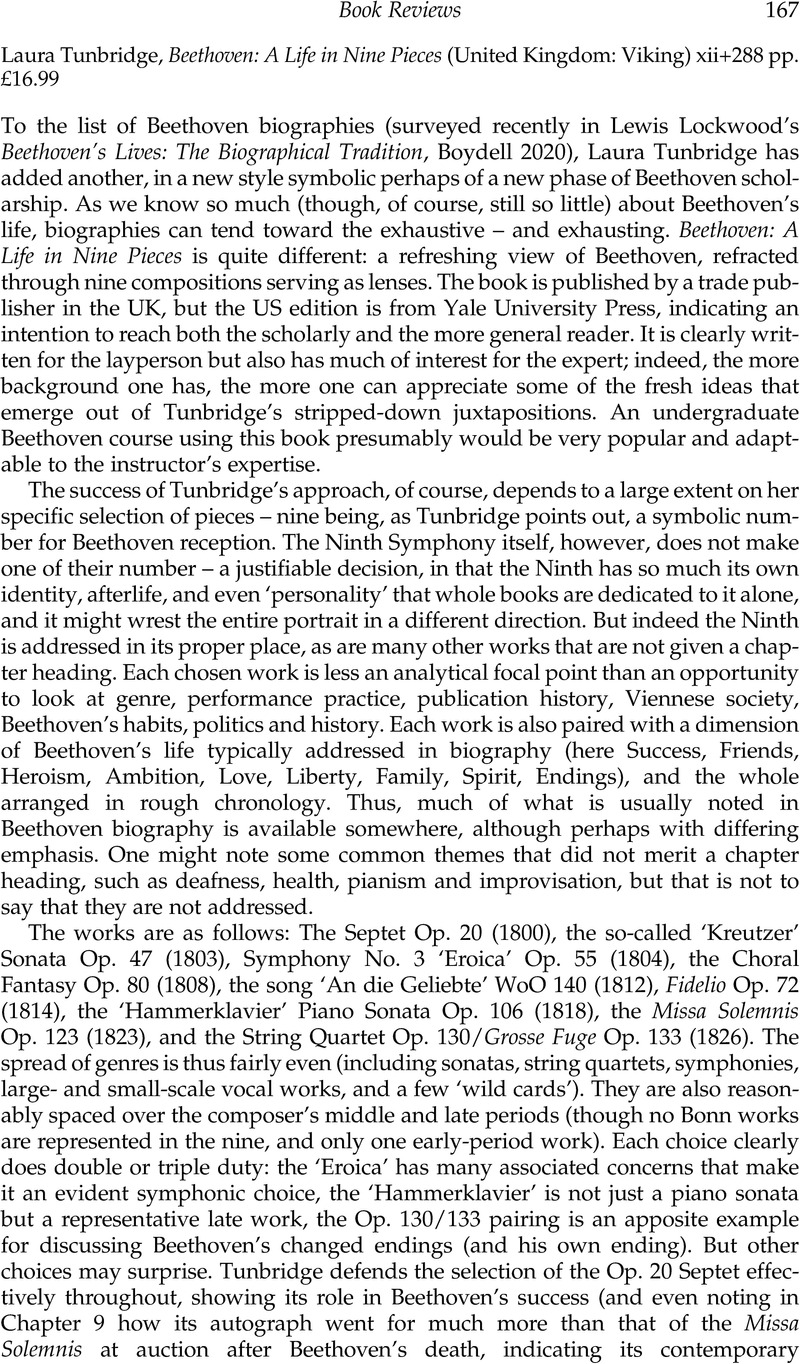No CrossRef data available.
Article contents
Laura Tunbridge, Beethoven: A Life in Nine Pieces (United Kingdom: Viking) xii+288 pp. £16.99
Published online by Cambridge University Press: 25 October 2021
Abstract

- Type
- Book Review
- Information
- Copyright
- Copyright © The Author(s), 2021. Published by Cambridge University Press
References
1 By contrast, Beethoven's misconception about his birth year begins Chapter 1 of Solomon's biography, and the psychoanalytical approach to Beethoven's life is at its height in the story of the Family Romance in Chapter 2, in which Beethoven's pretensions to aristocracy and the rumours of unattributed noble parentage are explored. See Solomon, Maynard, Beethoven, 2nd edn (New York: Schirmer, 1998): 3–6, 28–31Google Scholar.
2 Beethoven's title for Op. 47 was ‘Sonata per il Piano-forte ed un Violino obligato, scritto in uno stile molto concertante, quasi come d'un concerto’. Support has also been growing for the use of the title ‘Bridgetower’, as Janet Schmalfeldt suggested in 2009. See Schmalfeldt, Janet, ‘Beethoven's “Bridgetower” Sonata Op. 47’, in New Paths: Aspects of Music Theory in the Age of Romanticism, ed. Crispin, Darla (Leuven: Leuven University Press, 2009), 37–67CrossRefGoogle Scholar.
3 The story concerns Beethoven's fit of pique when Steibelt prepared a brilliant improvisation on a theme Beethoven had chosen to vary in the Trio for Piano, Clarinet, and Violoncello Op. 11. Beethoven is said to have revenged himself on the spot by taking a part from a quintet of Steibelt's, turning it upside-down, and improvising even more brilliantly. The suggestion emerged that this upside-down bass theme is the source of Beethoven's often-used bass theme in the ‘Eroica’ Symphony finale. See Meredith, William, ‘The Westerby-Meredith Hypothesis: The History of the Eroica Variations and Daniel Steibelt's Fortepiano Quintet, Opus 28, no. 2’, Beethoven Journal 27/1 (2012): 26–44Google Scholar.
4 See Barry Cooper, Beethoven's Folksong Settings (Oxford: Oxford University Press, 1994). I also address the subject in Waltz, Sarah Clemmens, ‘Great Expectations: Beethoven's Twenty-Five Scottish Songs’, The Beethoven Journal 26/1 (2011): 13–25Google Scholar.





